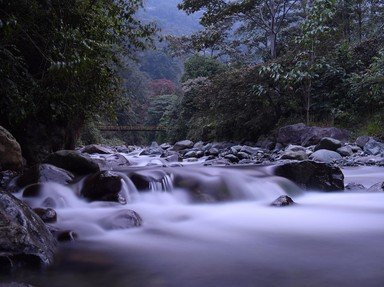Quiz Answer Key and Fun Facts
1. In what western South American country would you find the headwaters of the Amazon River ?
2. Twenty-first century geological studies have suggested that the Amazon originally flowed from east to west. True or false?
3. Which of these rivers, whose name might remind you of a kind of alcoholic beverage, is the longest of the Amazon's more than 1,100 tributaries?
4. Many of the Amazon's tributaries are blackwater rivers. What is responsible for the dark colour of their waters?
5. The Solimões, the main stem of the Amazon, joins the Rio Negro at Manaus. What natural resource made this large Brazilian city wealthy and famous during the 19th century?
6. The Portuguese word "várzea" describes what kind of ecosystem, very common in the Amazon basin?
7. What is the main reason why no bridges have been built across the Amazon?
8. Located at the mouth of the Amazon, Marajó Island is the second-largest island in South America. With a land area of 40,100 km² (15,500 sq mi), it is approximately the size of which affluent European country?
9. What kind of aquatic animal of the Amazon basin is the boto, or Inia geoffrensis, known for its distinctive pink coloration?
10. What human activity (widespread in Argentina and Uruguay) has been the main driver of deforestation in the Amazon basin?
Source: Author
LadyNym
This quiz was reviewed by FunTrivia editor
spanishliz before going online.
Any errors found in FunTrivia content are routinely corrected through our feedback system.
